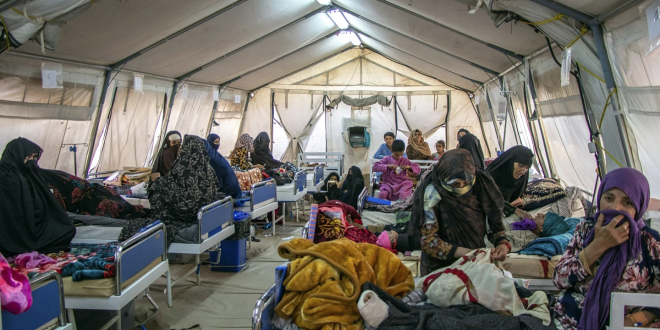WFP appeals for $19 million to provide aid in Afghanistan, s quake-hit areas

Kabul: The United Nations’ World Food Program on Wednesday appealed for $19 million to provide emergency assistance to tens of thousands of people affected by a series of devastating earthquakes and aftershocks that has rocked western Afghanistan.
Ana Maria Salhuana, deputy country director of the World Food Program in Afghanistan, said it was helping survivors but it urgently needed more funding because “we are having to take this food from an already severely underfunded program.”
The group said it is working to provide emergency food assistance to 100,000 people in the region.
“Disasters like these earthquakes pound communities who are already barely able to feed themselves back into utter destitution,” the WFP said.
A 6.3 magnitude earthquake struck part of western Afghanistan on Sunday, after thousands of people died and entire villages were flattened by major quakes a week earlier. It was the fourth quake the U.S. Geological Survey has measured at 6.3 magnitude in the same area in just over a week.
The initial earthquakes on Oct. 7 flattened whole villages in Herat province and were among the most destructive quakes in the country’s recent history.
The WFP said staffers responded within hours of the first earthquakes, distributing fortified biscuits, pulses and other food items to affected families in destroyed villages.
“An estimated 25,000 buildings have been destroyed,” the group said a statement. “The survivors are currently sleeping in tents next to the rubble of their homes, desperate and afraid of further earthquakes and aftershocks.”
In addition to the earthquake response, the WFP also urgently needs $400 million to prepare food before winter, when communities are cut off due to snow and landslides. In Afghanistan, these include communities of women who are being increasingly pushed out of public life.
The initial quake, numerous aftershocks and a third 6.3-magnitude quake on Wednesday flattened villages, destroying hundreds of mud-brick homes that could not withstand such force. Schools, health clinics and other village facilities also collapsed.
Besides rubble and funerals after that devastation, there was little left of the villages in the region’s dusty hills. Survivors are struggling to come to terms with the loss of multiple family members and in many places, living residents are outnumbered by volunteers who came to search the debris and dig mass graves.
Earthquakes are common in Afghanistan, where there are a number of fault lines and frequent movement among three nearby tectonic plates.
culled from Afghanistan Times

